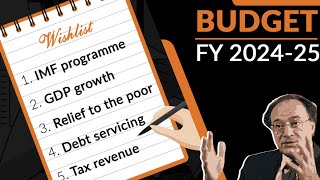The US job market is showing some signs of life with the number of Americans lining up to claim first-time unemployment aid edging lower last week, but businesses may still be nervous about hiring, reports showed on Thursday.
A separate report showed employment costs in the final quarter of 2003 rose by the smallest amount in a year and by slightly less than expected.
"The declining trend of initial state jobless claims reinforces expectations of an eventual substantial upturn by payrolls employment," said John Lonski, chief economist at Moody's Investors Service in New York.
Claims for state unemployment insurance benefits fell 1,000 to 342,000 in the week ended January 24, down from a revised 343,000 the previous week, the Labour Department said. Analysts were expecting claims of 340,000 after the originally reported 341,000 in the January 17 week.
The closely watched four-week moving average, considered a more reliable gauge of labour market health because it smooths volatility, increased 750 to 346,000.
A Labour Department official said there were no special factors in the report.
Some business managers may not be comfortable with hiring just yet, however. A monthly report from the private research group The Conference Board showed an index measuring help-wanted advertising in US newspapers fell slightly to 38 in December from 39 in November.
"Business executives continue to express caution about investing, as well as new hiring," said Conference Board economist Ken Goldstein. "This is the hurdle the building economic momentum has to jump over," he said.
In addition, the Federal Reserve Bank of Chicago said its National Activity Index slipped in December, mainly due to a lack of new jobs growth and slow manufacturing activity. The index fell to +0.13 in December from an upwardly revised reading of 0.68 in November.
Analysts will be keeping a careful eye on the employment-related numbers ahead of the Labour Department's January report on employment, due out late next week.
December's disappointing report showed only 1,000 new jobs were created, even though the weekly jobless claims data had been pointing to an improvement. The weak employment growth presents a challenge to President George W. Bush as he tries to take credit for a recovering economy in the run up to the November election.
A pickup in the labour market is seen as crucial for a sustained economic recovery.
A separate report from the Labour Department showed US employment costs in the final quarter of 2003 rose by the smallest amount in a year and by slightly less than expected.
The Employment Cost Index, a broad gauge of what employers pay in wages, salaries and benefits, climbed 0.7 percent in the last three months of the year, down from a 1.0 percent increase in the previous quarter.
Wall Street analysts had been expecting a 0.9 percent rise in costs.
Climbing healthcare and pension costs helped to push up the index. Benefits costs rose 1.2 percent, outpacing a 0.5 percent gain in workers' wages. It was the smallest rise in benefits costs since the third quarter of 2002, while the increase in wages and salaries was the slightest in a year.
American businesses have increasingly utilised technology and hired less expensive labour to cut down costs. The resulting workplace productivity gains have put little pressure on managers to expand their payrolls and dole out pay raises.
Also, economists say some employers are taking on temporary workers to try and contain costs until they are convinced the economy is on a sound enough footing to need permanent new workers.
For the year, employment costs rose 3.8 percent, up from a 3.4 percent gain in 2002.
BR100
8,052
Increased By
75.9 (0.95%)
BR30
25,581
Decreased By
-21.4 (-0.08%)
KSE100
76,707
Increased By
498.6 (0.65%)
KSE30
24,698
Increased By
260.2 (1.06%)


















Comments
Comments are closed.